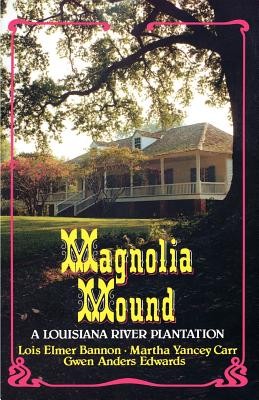
- We will send in 10–14 business days.
- Author: Lois Elmer Bannon
- Publisher: Pelican Publishing Company
- ISBN-10: 0882893815
- ISBN-13: 9780882893815
- Format: 14.3 x 21.8 x 0.8 cm, minkšti viršeliai
- Language: English
- SAVE -10% with code: EXTRA
Reviews
Description
Situated high on a ridge overlooking the meandering Mississippi River, Magnolia Mound stands as Baton Rouge's most imposing-- and most historically significant-- eighteenth century structure. Indeed, the history of Magnolia Mound is the history of the Baton Rouge area.
This volume, researched and written under the direction of the Board of Trustees of Magnolia Mound, traces the origin and development of this splendid Creole raised cottage, providing an intimate look at plantation life from the turn of the eighteenth century as well as the economic system that supported it.
Beginning with the original land grant of 1786, the authors document both the social and the architectural history of the celebrated structure-- from its origin as a modest settler's house and farm to its later grandeur as a distinctive home situated within an extensive working plantation.
The book also includes an account of the successful struggle by the Foundation for Historical Louisiana-- which keeps the building and grounds open to the public-- to save the house from destruction in 1960.
EXTRA 10 % discount with code: EXTRA
The promotion ends in 23d.16:37:45
The discount code is valid when purchasing from 10 €. Discounts do not stack.
- Author: Lois Elmer Bannon
- Publisher: Pelican Publishing Company
- ISBN-10: 0882893815
- ISBN-13: 9780882893815
- Format: 14.3 x 21.8 x 0.8 cm, minkšti viršeliai
- Language: English English
Situated high on a ridge overlooking the meandering Mississippi River, Magnolia Mound stands as Baton Rouge's most imposing-- and most historically significant-- eighteenth century structure. Indeed, the history of Magnolia Mound is the history of the Baton Rouge area.
This volume, researched and written under the direction of the Board of Trustees of Magnolia Mound, traces the origin and development of this splendid Creole raised cottage, providing an intimate look at plantation life from the turn of the eighteenth century as well as the economic system that supported it.
Beginning with the original land grant of 1786, the authors document both the social and the architectural history of the celebrated structure-- from its origin as a modest settler's house and farm to its later grandeur as a distinctive home situated within an extensive working plantation.
The book also includes an account of the successful struggle by the Foundation for Historical Louisiana-- which keeps the building and grounds open to the public-- to save the house from destruction in 1960.


Reviews